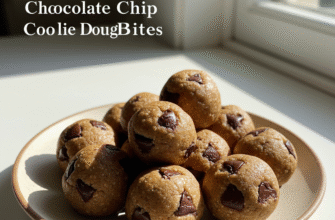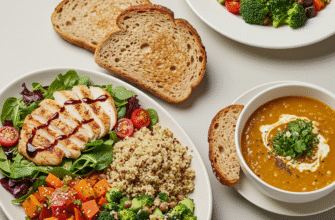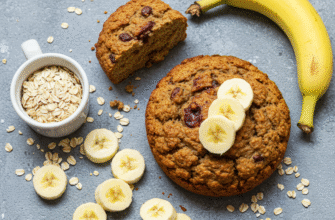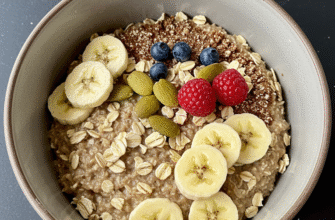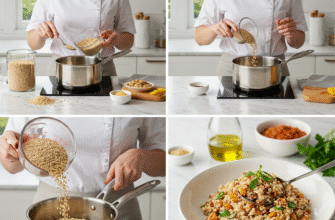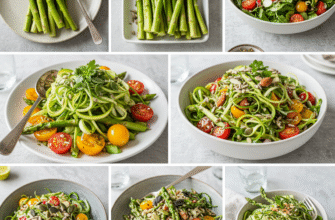Snack time. For kids, it’s often the highlight between meals. For parents, it can feel like another hurdle in the quest for healthy eating. But what if snack time could be a secret weapon? A chance to sneak in vital nutrients, especially fiber? Getting enough fiber is crucial for little bodies. It aids digestion, helps maintain stable energy levels, and contributes to feeling full and satisfied. The good news is, high-fiber snacks don’t have to be boring or complicated. With a little creativity, you can offer delicious options your kids will actually get excited about.
Think beyond the usual pre-packaged suspects, which are often low in fiber and high in sugar or salt. Whole foods are your best friends when boosting fiber intake. Fruits, vegetables, whole grains, beans, and even certain seeds can be transformed into kid-friendly power snacks. The trick often lies in preparation and presentation. Remember, kids eat with their eyes first!
Fruits: Nature’s Sweet Fiber Boost
Fruits are often an easy sell for kids due to their natural sweetness. Many are fantastic sources of fiber. Instead of just handing over a whole apple, try slicing it thinly and serving it with a small dollop of nut butter (if age-appropriate and no allergies) or yogurt dip. Pears are another fiber powerhouse, especially with the skin on. Berries – like raspberries, blackberries, and blueberries – are packed with fiber and antioxidants. They’re perfect for adding to yogurt, oatmeal, or just eating by the handful.
Try these fruity fiber ideas:
- Apple slices with cinnamon: A simple classic. The warmth of cinnamon makes it feel like a treat.
- Pear boats: Slice a pear lengthwise, scoop out the core slightly, and fill with a little cottage cheese or yogurt and a sprinkle of chia seeds.
- Berry Bonanza Bowl: A mix of fresh berries. Simple, colourful, and effective.
- Orange smiles: Cut oranges into wedges – easy for little hands to hold.
- Banana “sushi”: Spread a thin layer of sunflower seed butter on a whole wheat tortilla, place a banana near one edge, roll it up tightly, and slice into “sushi” rounds.
- Dried fruit (in moderation): Raisins, apricots, and prunes offer concentrated fiber. Be mindful of portion sizes due to higher sugar concentration and stickiness on teeth. Offer them alongside water.
Remember to wash all fruits thoroughly. For younger children, ensure fruits are cut into safe, manageable pieces to prevent choking hazards. Leaving edible skins on fruits like apples, pears, and peaches significantly increases their fiber content.
Veggies: The Unsung Snack Heroes
Getting kids excited about vegetables can sometimes feel like climbing Mount Everest. But as snacks? It’s possible! The key is often pairing them with something kids already love, like a tasty dip, or making them fun to eat. Raw veggies offer a satisfying crunch and plenty of fiber.
Crunchy veggie snack inspirations:
- Carrot and celery sticks with hummus: A classic for a reason. Hummus itself, made from chickpeas, is another great fiber source.
- Bell pepper strips: Red, yellow, and orange peppers are naturally sweeter and visually appealing. Serve plain or with guacamole or a yogurt-based dip.
- Cucumber rounds: Refreshing and easy to eat. Top with a tiny bit of cream cheese and a sprinkle of dill.
- Cherry tomatoes: Sweet, bite-sized, and fun to pop in the mouth (slice in half for younger kids).
- Edamame (steamed soybeans): Fun to pop out of the pods and packed with fiber and protein. Buy them frozen and steam quickly. Ensure kids don’t eat the pods.
- Sweet potato wedges (baked): Cut sweet potatoes into wedges, toss lightly with olive oil and a pinch of paprika or cinnamon, and bake until tender. A healthier alternative to fries.
Making veggies visually appealing helps. Cut them into fun shapes using cookie cutters, arrange them creatively on a plate (like a smiley face or a flower), or offer a “rainbow” of different coloured vegetable sticks. Dips make veggies much more enticing – think hummus, bean dips, guacamole, or plain yogurt mixed with herbs.
Did You Know? Fiber plays a vital role in keeping your child’s digestive system running smoothly. It helps prevent constipation by adding bulk and softness to stools. Furthermore, fiber-rich foods can help kids feel fuller for longer, potentially aiding in maintaining a healthy weight and steady energy levels between meals.
Whole Grains: Sustained Energy and Fiber
Refined grains (like white bread, white pasta, and sugary cereals) have had much of their fiber stripped away. Choosing whole grains ensures your child gets the benefit of the entire grain kernel, including the fiber-rich bran and germ. Look for “100% whole wheat” or “whole grain” as the first ingredient on labels.
Whole-grain snack suggestions:
- Whole-wheat crackers with cheese or avocado: Choose crackers where whole wheat flour is the primary ingredient.
- Air-popped popcorn: A fantastic, low-calorie, high-fiber whole-grain snack. Skip the excessive butter and salt; try nutritional yeast for a cheesy flavour or a sprinkle of cinnamon. Be cautious with whole kernels for very young children due to choking risk.
- Oatmeal: Not just for breakfast! A small bowl of oatmeal (made with rolled oats or steel-cut oats, not instant packets high in sugar) can be a warming, filling snack. Top with fruit or seeds.
- Whole-wheat pita bread with hummus: Cut pita into triangles for easy dipping.
- Brown rice cakes: Opt for plain versions and top them with mashed avocado, nut/seed butter, or even a thin layer of unsweetened applesauce.
- Mini whole-wheat muffins: Bake a batch of muffins using whole-wheat flour and incorporate fruits like blueberries or mashed bananas, or even grated carrots or zucchini for an extra fiber and veggie boost. Control the sugar content when baking at home.
Reading labels is key here. Many products marketed to kids might seem healthy but contain refined grains and added sugars. Focus on simpler, less processed whole-grain options.
Legumes, Nuts, and Seeds: Tiny Fiber Powerhouses
Beans, lentils, nuts, and seeds are nutritional champions, offering protein, healthy fats, and, importantly, lots of fiber.
Legumes (Beans & Lentils)
Think beyond dinner entrees. Beans can make great snacks!
- Roasted chickpeas: Drain and rinse a can of chickpeas, pat them dry, toss with a little olive oil and seasonings (like paprika, cumin, or garlic powder), and roast until crispy. A crunchy, savoury snack.
- Bean dip: Blend black beans or white beans with lime juice, cilantro, and a touch of garlic for a flavourful dip served with veggie sticks or whole-wheat pita.
- Hummus: As mentioned, this chickpea-based dip is versatile and fiber-filled.
Nuts and Seeds (Use Caution for Young Children)
Nuts and seeds are incredibly nutrient-dense but pose a choking hazard for children under 4 or 5. For younger kids, offer them in butter form (spread thinly) or finely ground.
- Nut/Seed butters: Peanut butter, almond butter, cashew butter, or sunflower seed butter (a great allergy-friendly option) spread thinly on whole-wheat crackers, apple slices, or celery sticks. Choose natural varieties without added sugar or hydrogenated oils.
- Trail mix (for older kids): Create your own mix with nuts (almonds, walnuts), seeds (pumpkin, sunflower), whole-grain cereal Os, and a small amount of dried fruit. Avoid mixes with candy pieces.
- Chia seed pudding: Mix chia seeds with milk (dairy or plant-based) and a touch of vanilla or cinnamon. Let it sit in the fridge until it thickens into a pudding-like consistency. Top with berries. Chia seeds are fiber superstars!
- Pumpkin seeds (Pepitas): Roasted pumpkin seeds make a crunchy snack for older kids.
Important Safety Note: Whole nuts and seeds, spoonfuls of nut butter, and large chunks of hard fruits or vegetables can be serious choking hazards for young children, typically those under age 4 or 5. Always offer age-appropriate textures. Grind nuts and seeds, spread butters thinly, and cut foods into small, manageable pieces.
Making Fiber Fun
Boosting fiber doesn’t mean sacrificing flavour or fun. Presentation matters! Use cookie cutters for fruits and sandwiches, arrange snacks into funny faces on a plate, or serve dips in colourful bowls. Involve your kids in snack preparation – they’re more likely to eat something they helped make. Offer choices between two healthy options to give them a sense of control.
Remember that consistency is key. Introduce new high-fiber foods gradually alongside familiar favourites. It can take multiple exposures for a child to accept a new food. Make snack time a positive experience, free from pressure. By incorporating a variety of these whole-food snacks, you can significantly increase your child’s fiber intake, supporting their digestive health and overall well-being, one delicious bite at a time.

